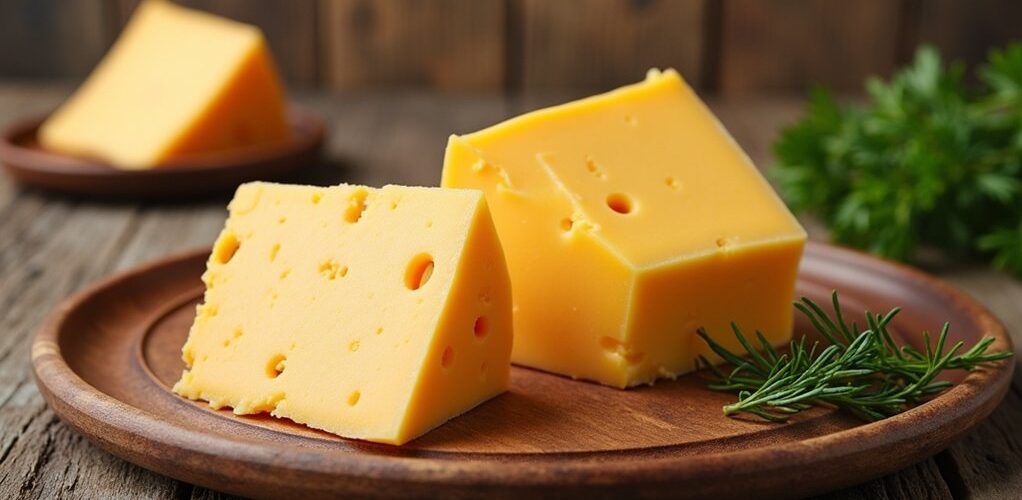
Natural cheese varieties are excellent choices for low-carb diets, offering substantial protein and healthy fats with minimal carbohydrates. Most hard cheeses contain less than 1 gram of carbs per serving, while providing essential nutrients like calcium, vitamin K2, and conjugated linoleic acid. Portion control remains essential, with recommendations suggesting 4 ounces daily maximum. Those with dairy sensitivities should monitor their reactions, while others can explore numerous ways to incorporate this versatile ingredient into their meal plans.
Key Takeaways
- Most natural cheeses are low in carbohydrates, with varieties like goat cheese containing zero carbs and Parmesan having only 0.7g per tablespoon.
- Cheese provides essential protein and healthy fats, making it an excellent choice for low-carb dieters seeking satiety and nutrition.
- Choose aged, hard cheeses over processed varieties, as they typically contain fewer carbohydrates and fewer artificial additives.
- Practice portion control by limiting cheese to 4 ounces daily, as its high caloric density can affect weight loss goals.
- Research supports cheese consumption during low-carb dieting, showing positive effects on fat loss and diet adherence when eaten moderately.
The Role of Cheese in Low-Carb Living
Cheese emerges as a valuable ally for individuals following a low-carb diet, offering a perfect combination of protein and healthy fats while containing minimal carbohydrates. With varieties like goat cheese containing zero carbs and blue cheese having merely 0.5 grams per serving, cheese fits seamlessly into low-carb eating patterns. Beyond its macronutrient profile, cheese's high fat content provides essential energy, while its substantial protein content promotes satiety, helping control overall calorie intake. Hard cheeses like Parmesan, with 35 grams of protein per 100 grams, are particularly effective for maintaining fullness. However, being calorie-dense, moderation remains essential when incorporating cheese into a low-carb diet. Individual tolerance varies, so starting with small portions allows people to gauge their personal response while reaping the nutritional benefits. Incorporating high-fat dairy like cheese in moderation can also provide conjugated linoleic acid, which may aid in fat loss.
Understanding Carbohydrate Content in Different Cheeses
A careful examination of carbohydrate content across different cheese varieties reveals significant variations that can impact low-carb dietary choices. While most natural cheese varieties maintain low carbohydrate content, processed cheese products often contain higher carb counts due to added fillers. Understanding these differences helps in making informed dietary decisions. Including high-fat dairy, such as full-fat cheese, in your diet can enhance meal flavors while keeping carb intake low.
| Cheese Type | Carbs per Serving | Best Usage |
|---|---|---|
| Goat/Blue | <1g per oz | Direct consumption |
| Cream Cheese | 1g per oz | Spreads, dips |
| Parmesan | 0.7g per tbsp | Garnishing |
| Sharp Cheddar | 1g per slice | Cooking, snacking |
| Processed Cheese | 2-3g per slice | Limited use |
For ideal low-carb eating, focus on natural cheese varieties like sharp cheddar and Parmesan cheese, while consuming processed options in moderation.
Best Cheese Options for Low-Carb Success
When selecting dairy options for a low-carb lifestyle, certain varieties of cheese stand out as particularly beneficial choices. Goat cheese leads the pack with zero carbs while delivering substantial protein and fat content, making it an excellent foundation for low-carb meals. Blue cheese and parmesan offer minimal carbs while providing intense flavors that enhance dishes without compromising dietary goals. Cream cheese serves as a versatile option with only one gram of carbs per ounce, perfect for creating rich, satisfying dishes while maintaining ketogenic requirements. For those seeking convenient snack options, cheese crisps deliver a satisfying crunch with negligible carbohydrate content. Incorporating cheese into a low-carb diet can be complemented by using keto-friendly sweeteners, which allow for sweetness without disrupting ketosis. These carefully selected dairy choices enable individuals to enjoy flavorful meals while adhering to their low-carb nutritional objectives.
Hidden Carbs: Processed Cheese and Additives
Despite their convenience and widespread availability, processed cheese products often harbor unexpected carbohydrate content that can derail low-carb dietary goals. A single slice of processed cheese can contain up to 2 grams of hidden carbs, primarily from additives and stabilizers used in manufacturing. Consumers following a low-carb diet should carefully examine nutritional values on processed cheese labels, as manufacturers may incorporate sugars and high-carb fillers that aren't immediately apparent. The safest approach is to choose unprocessed cheeses, which naturally contain minimal carbohydrates and avoid the hidden ingredients found in their processed counterparts. Whole cheese options provide the same satisfying taste and texture while better supporting low-carb lifestyle goals, making them the superior choice for health-conscious individuals monitoring their carbohydrate intake.
Portion Control and Daily Cheese Limits
Maintaining proper portion control stands as one of the most essential aspects of incorporating cheese into a low-carb diet. While cheese offers numerous nutritional benefits, managing cheese intake helps prevent excessive calorie consumption and guarantees successful adherence to a low carb lifestyle. To effectively manage cheese portions, consider these key guidelines:
- Limit daily cheese intake to 4 ounces to maintain appropriate carb content and calorie levels.
- Choose varieties like cheddar or goat cheese, which contain zero carbs per ounce.
- Pair cheese with high-fiber foods to enhance satiety and create balanced meals.
Additionally, adequate hydration is crucial when following a low-carb diet to support overall health and maintain balance, especially when consuming calorie-dense foods like cheese. Moderation remains critical when consuming full-fat cheeses, as their calorie-dense nature can potentially stall weight loss progress.
Health Benefits of Cheese on a Low-Carb Diet
Cheese serves as an excellent source of calcium on a low-carb diet, providing essential support for bone density and skeletal health throughout life. The natural fats found in cheese, particularly conjugated linoleic acid (CLA), have been associated with potential cardiovascular benefits and improved metabolic health when consumed as part of a balanced diet. Beyond its calcium content, cheese contains heart-protective compounds that may help reduce inflammation and support overall cardiovascular function, making it a valuable addition to low-carb eating plans. Additionally, monitoring cholesterol levels is crucial for assessing the impact of cheese and other high-fat foods on heart health, especially when following a keto or low-carb diet.
Calcium and Bone Health
One of the most significant health advantages of incorporating cheese into a low-carb diet lies in its exceptional calcium content, particularly evident in hard varieties like Parmesan, which delivers an impressive 1184 mg of calcium per 100 grams.
This dairy product offers several critical benefits for bone health:
- Regular cheese consumption helps meet the daily recommended calcium intake of 1000 mg for adults, supporting bone density.
- The protein components, whey and casein, actively contribute to bone repair and growth.
- Calcium from cheese is more efficiently absorbed compared to plant-based sources.
Research indicates that including cheese and other dairy products in one's diet may reduce the risk of fractures and osteoporosis, particularly in older adults, while improving overall bone mineral density.
Heart-Protective Fats Content
Despite common misconceptions about dietary fats, research indicates that the fat content in cheese offers significant cardiovascular benefits for those following a low-carb diet. The saturated fats in cheese contribute to heart health by potentially increasing HDL cholesterol levels and supporting energy metabolism.
Cheese contains conjugated linoleic acid (CLA), which has demonstrated positive effects on cardiovascular risk markers and fat metabolism. Additionally, the combination of calcium, potassium, and vitamins A and K2 in cheese works synergistically to support arterial function and maintain healthy blood pressure levels.
For enhanced benefits, choosing grass-fed cheese varieties can provide higher concentrations of omega-3 fatty acids, further promoting cardiovascular well-being. Studies have consistently shown that regular cheese consumption may help reduce the risk of heart disease when incorporated into a balanced diet.
Potential Drawbacks of Dairy Consumption
While cheese can be a beneficial addition to a low-carb diet, several potential drawbacks warrant careful consideration, including its impact on weight loss progress through high caloric density and the risk of overconsumption.
Some individuals may experience digestive discomfort or intolerance to dairy products, particularly those sensitive to lactose or milk proteins.
Additionally, certain cheese varieties contain hidden carbohydrates and additives that could interfere with ketosis or low-carb dietary goals, making label reading and portion control essential practices.
It's important to note that digestive issues from low fiber intake are a potential risk when following a ketogenic diet, making it crucial to balance cheese consumption with other fiber-rich, low-carb foods.
Weight Loss Impact Concerns
For individuals following a low-carb diet, cheese consumption requires careful consideration due to its potential impact on weight loss goals. While cheese can be included in a low-carb eating plan, excessive dairy consumption may hinder progress through various mechanisms.
Key concerns regarding cheese and weight loss include:
- High calorie density can lead to inadvertent overeating, making portion control essential.
- High-lactose dairy products may raise insulin levels and affect insulin sensitivity.
- Digestive issues like bloating can impact adherence to weight loss plans.
Moderation is vital when incorporating cheese into a low-carb diet. Experts recommend limiting daily cheese intake to 4 ounces and cream to 2 tablespoons.
This measured approach helps prevent caloric surplus while allowing dieters to enjoy dairy products without compromising their weight loss objectives.
Digestive Tolerance Issues
Maneuvering digestive tolerance issues presents a notable challenge for individuals incorporating cheese into their low-carb diet plans. For many people, dairy products can trigger various forms of digestive discomfort, with lactose intolerance affecting up to two-thirds of the global population.
Common symptoms include bloating, gas, and abdominal pain when consuming high-lactose dairy products.
While some low-carb options may contain less lactose, individual responses to dairy consumption can vary considerably. Those with severe sensitivities or milk allergies might need to exercise particular caution, as reactions can range from mild discomfort to serious health concerns.
The key lies in moderation and careful observation of personal tolerance levels, allowing individuals to make informed decisions about incorporating cheese into their low-carb lifestyle while maintaining digestive comfort.
Hidden Carbohydrate Risks
Beyond digestive concerns, hidden carbohydrates in cheese products present significant challenges for individuals following low-carb diets. While natural cheeses typically contain minimal carbohydrates, processed varieties often incorporate additives that can impact ketosis and metabolic health.
Key concerns when consuming dairy products on a low-carb diet include:
- Processed cheese products frequently contain fillers and stabilizers that add unexpected carbohydrates.
- High-lactose dairy products can raise blood sugar and trigger unwanted insulin release.
- Excessive dairy consumption may lead to increased calorie intake, potentially causing weight-loss stalls.
Understanding these hidden carbohydrate risks is essential for maintaining ketosis and achieving weight loss goals.
Careful attention to ingredient labels and choosing minimally processed cheese options can help minimize these concerns while following a low-carb lifestyle.
Hard vs. Soft Cheese: Making the Right Choice
The choice between hard and soft cheeses plays an essential role in maintaining a successful low-carb diet. Hard cheeses, including Parmesan and aged Cheddar, contain considerably lower carb counts, typically 1-3 grams per 100 grams, making them ideal choices for carbohydrate-conscious individuals. These varieties also pack more protein per ounce, offering 6-8 grams, which aids in satiation and helps maintain dietary goals. Protein synthesis maintains amino acid balance crucial for muscle maintenance and recovery, which is particularly important when following a low-carb diet. While soft cheeses like cream cheese and ricotta can be incorporated into low-carb diets, their slightly higher carbohydrate content of 1-4 grams per 100 grams requires more careful portion control. The fermentation process in cheese production particularly benefits hard cheeses, reducing their lactose content and making them more digestible for those following low-carb eating plans.
Navigating Cheese Labels and Nutrition Facts
Successfully managing cheese labels and nutrition facts requires careful attention to specific details that can greatly impact a low-carb diet's success.
When examining cheese labels, focus on natural cheese varieties rather than processed cheese options, which often contain hidden carbohydrates and additives.
Key considerations when reading nutrition facts include:
- Carbohydrate content should range between 0-2 grams per ounce
- High-fat cheeses like cheddar and Parmesan typically contain fewer carbs
- Flavored varieties may include additional carbs from added ingredients
Understanding these elements helps consumers make informed choices for low-carb diets. It's also important to prioritize high-quality fats, such as those found in natural cheeses, as these can help improve cholesterol levels on a low-carb or keto diet. Full-fat, natural cheeses generally offer better nutritional value, while processed alternatives often include unnecessary fillers that can increase carbohydrate content.
Regular label reading guarantees ideal selection for maintaining ketogenic or low-carb lifestyle goals.
Dairy Sensitivities and Alternative Options
While cheese offers numerous benefits for low-carb dieters, understanding and managing dairy sensitivities remains vital for ideal health and dietary success.
With lactose intolerance affecting up to two-thirds of the global population, many individuals must carefully navigate their dairy consumption to avoid digestive discomfort.
Fortunately, several options exist for those with dairy sensitivities following a low carb diet. Lactose-free dairy options provide essential nutrients while maintaining minimal carbohydrate content.
Additionally, plant-based milk alternatives, such as unsweetened almond, coconut, and soy milk, offer suitable replacements for traditional dairy products.
When incorporating any dairy products, proper portion control is important, as excessive consumption can impede weight loss goals.
It's essential to monitor individual sensitivities, as some people may react to dairy proteins even in lactose-free products.
A key aspect of incorporating dairy into a low-carb diet is ensuring that electrolyte intake is balanced, as dairy can contribute to overall hydration needs and electrolyte levels.
Tips for Incorporating Cheese Into Low-Carb Meals
Selecting the right cheeses for a low-carb diet requires focusing on aged varieties like Parmesan and cheddar, which offer maximum flavor with minimal carbohydrates.
Managing portion sizes becomes easier by pre-measuring cheese servings into one-ounce portions and storing them in containers for quick access during meal preparation.
Creative meal planning can transform basic ingredients into satisfying dishes by incorporating cheese as a topping for roasted vegetables, mixing it into cauliflower-based dishes, or using it as a protein-rich addition to salads.
Best Cheeses For Keto
Despite the restrictive nature of a ketogenic diet, cheese enthusiasts can take comfort in knowing that many varieties of cheese are perfectly suited for low-carb eating.
When selecting the best cheeses for keto, focus on high-quality, full-fat varieties that offer maximum nutritional benefits while keeping carb intake minimal.
Several excellent options for maintaining ketosis include:
- Goat cheese and blue cheese, containing less than 1g of carbs per serving
- Cream cheese, with only 1g of carbs per ounce, perfect for creating creamy dishes
- Parmesan cheese, which can be enjoyed as is or transformed into cheese crisps
While these options are keto-friendly, portion control remains essential, as calories from cheese can accumulate quickly, potentially affecting weight loss goals on a strict low-carb diet.
Cheese Portion Control Tips
Successfully managing cheese portions on a low-carb diet requires strategic planning and mindful consumption habits. To maintain keto guidelines while enjoying cheese's benefits, it's essential to monitor serving sizes, as most varieties contain 1-2 grams of carbs per ounce, which can accumulate quickly throughout the day.
Effective portion control strategies include using stronger-flavored cheeses like sharp cheddar or blue cheese to enhance meals while using smaller amounts. Treating cheese as a condiment rather than a main ingredient helps regulate consumption without sacrificing flavor.
Pairing cheese with low-carb vegetables increases meal volume and satisfaction while keeping carb intake in check. For ideal results, limit daily cheese consumption to approximately 4 ounces, ensuring adherence to low-carb diet requirements while maximizing the nutritional benefits of this versatile food.
Creative Cheese Meal Ideas
While following a low-carb diet might seem restrictive, incorporating cheese creatively into meals opens up numerous flavorful possibilities. High-fat options like feta and goat cheese enhance salads while maintaining low carb counts, and cheese serves as an excellent topping for non-starchy vegetables to boost both nutrition and taste.
For those seeking diverse meal options, consider these cheese-focused preparations:
- Create cheese-based snacks like baked cheese crisps for protein-rich, carb-conscious treats.
- Blend cream cheese into smoothies for a creamy texture and healthy fat boost.
- Prepare stuffed meats by filling chicken breasts or pork chops with cheese and herbs.
These creative applications demonstrate how cheese can transform ordinary low-carb dishes into satisfying meals while adhering to dietary guidelines.
Research-Backed Evidence on Cheese and Weight Loss
Recent scientific research has established compelling evidence supporting the role of cheese in successful weight loss efforts, particularly within low-carbohydrate dietary frameworks.
Studies demonstrate that cheese consumption contributes to increased satiety, helping individuals maintain caloric deficits while adhering to their low carb diet. The high protein content in cheese aids in preserving muscle mass during weight loss, while essential nutrients support overall health and metabolism.
Research indicates that full-fat cheese varieties contain beneficial compounds like conjugated linoleic acid (CLA), which may positively influence body composition and enhance fat loss outcomes.
In addition, clinical investigations suggest that incorporating moderate amounts of cheese into meal plans can improve dietary adherence, making it a valuable component for those pursuing sustainable weight management through low-carbohydrate approaches.
Frequently Asked Questions
Is Cheese Ok to Eat on a Low Carb Diet?
Most cheese types fit well into low-carb diets, offering minimal carb counts and valuable health benefits. Hard varieties provide excellent choices, while portion sizes should be monitored. Various recipes and snack ideas accommodate lactose intolerance.
How Does Cheese Have No Carbs but Milk Does?
During fermentation, bacteria consume milk sugars (lactose), markedly reducing carbohydrate content in cheese. This process creates nutritional differences between cheese varieties and milk, making cheese naturally lower in carbs.
Why Can I Eat Cheese but Not Drink Milk on Keto?
Most cheese types are keto-friendly dairy due to low lactose content and high fat content, while milk contains higher milk sugars. Cheese benefits include protein retention, making it preferable over milk alternatives.
What Dairy Is Good for Low Carb Diet?
Full-fat dairy options like cream cheese, hard-aged cheeses, Greek yogurt, and cottage cheese offer high protein and minimal carbs. Fermented products and lactose-free alternatives provide digestible options for low-carb dieters.
Conclusion
Cheese can be a valuable component of a low-carb diet when consumed mindfully. Most natural cheeses contain minimal carbohydrates while offering protein, healthy fats, and essential nutrients. Success lies in choosing unprocessed varieties, monitoring portion sizes, and being aware of individual dairy sensitivities. By understanding cheese labels, tracking carbohydrate content, and incorporating cheese strategically into meals, individuals can enjoy this versatile food while maintaining their low-carb lifestyle goals.
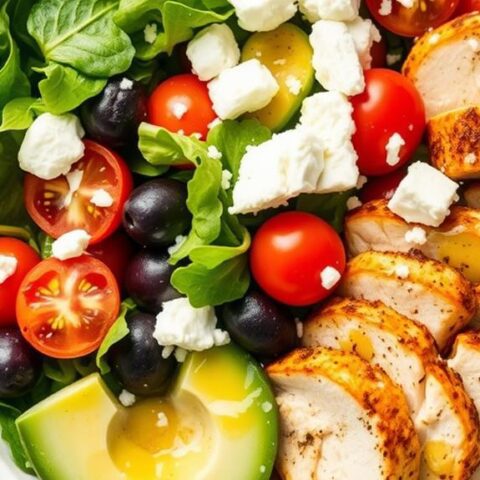
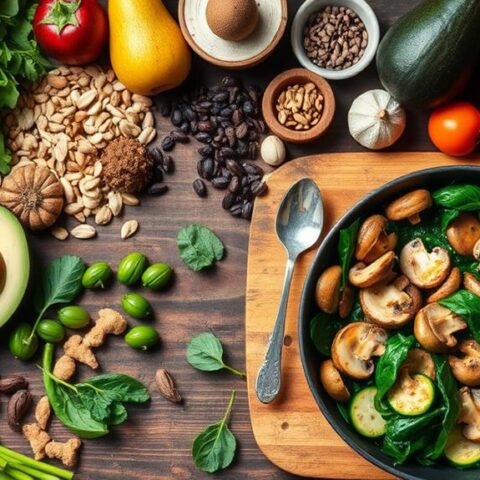
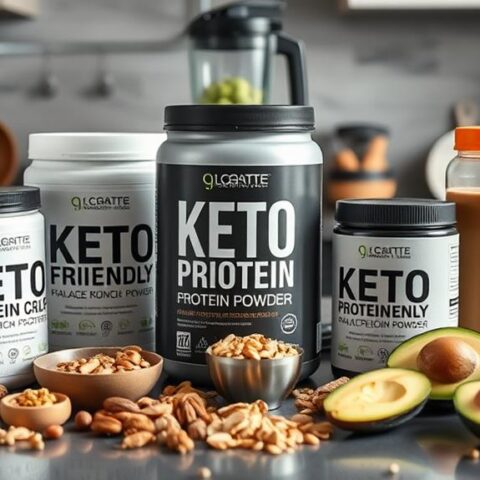
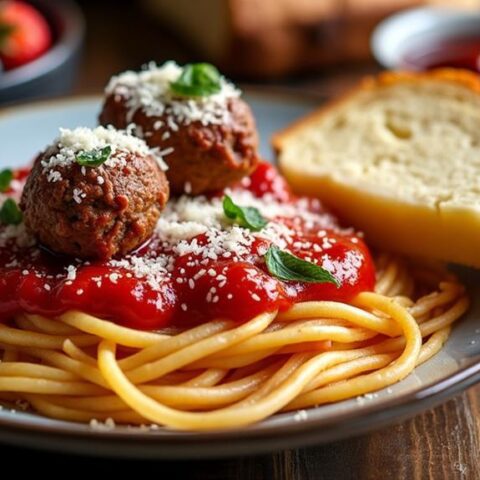



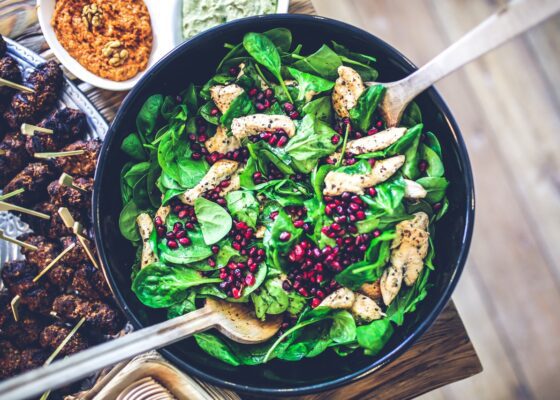

No Comments